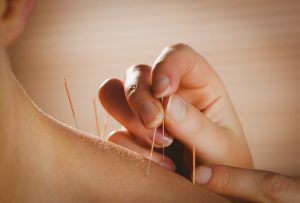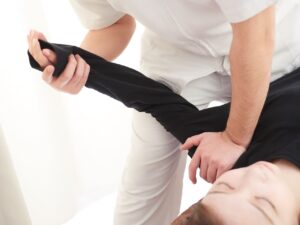Understanding Knee Pain
Knee pain is a common issue that affects people of all ages and activity levels. Whether you’re an athlete, a weekend warrior, or lead a sedentary lifestyle, knee pain can significantly impact your daily life. In this section, we’ll explore the common causes of knee pain and its impact on mobility.
Common Causes of Knee Pain
Knee pain can arise from various conditions and injuries. Here are some of the most common causes:
- Osteoarthritis: A degenerative joint disease that wears down the cartilage in your knee, leading to pain and stiffness.
- Rheumatoid Arthritis: An autoimmune disorder that affects the joints, causing pain, swelling, and inflammation.
- Tendonitis: Inflammation of the tendons around the knee, often due to overuse or repetitive stress.
- Meniscus Tears: Tears in the shock-absorbing cartilage of the knee, commonly caused by twisting or rotating the knee while bearing weight.
- Ligament Injuries: Sprains or tears in the knee ligaments, such as the ACL (anterior cruciate ligament) or MCL (medial collateral ligament), often due to sports injuries.
- Bursitis: Inflammation of the small fluid-filled sacs (bursae) that cushion the knee joint.
- Patellar Tendinitis: Also known as jumper’s knee, this condition is caused by inflammation of the tendon connecting the kneecap to the shinbone.
| Condition | Description |
|---|---|
| Osteoarthritis | Degenerative joint disease causing cartilage wear and tear |
| Rheumatoid Arthritis | Autoimmune disorder affecting joint lining, causing inflammation |
| Tendonitis | Inflammation of tendons around the knee due to overuse |
| Meniscus Tears | Tears in the knee’s shock-absorbing cartilage, often from twisting injuries |
| Ligament Injuries | Sprains or tears in knee ligaments due to sudden movements |
| Bursitis | Inflammation of bursae, the small fluid-filled sacs that cushion the knee joint |
| Patellar Tendinitis | Inflammation of the tendon connecting the kneecap to the shinbone, often from overuse |
For more information on the conditions that cause knee pain and how physiotherapy can help, see our article on physiotherapy treatment.
Impact of Knee Pain on Mobility
Knee pain can greatly affect your ability to move and perform everyday activities. Here are some ways knee pain might impact your mobility:
- Limited Range of Motion: Pain and swelling can restrict the movement of your knee, making it difficult to bend or straighten your leg.
- Difficulty Walking: Pain in your knee can make walking painful and awkward, potentially leading to a limp.
- Reduced Stamina: Persistent knee pain may lead to decreased endurance, limiting your ability to engage in prolonged physical activities.
- Loss of Strength: Pain can inhibit your ability to perform exercises, leading to muscle weakness around the knee.
- Balance Issues: Knee pain or instability can affect your balance, increasing the risk of falls.
Knee pain can be a significant barrier to maintaining an active lifestyle. Understanding the causes and impacts of knee pain is the first step toward effective physiotherapy treatment. By working with a qualified physiotherapist, you can develop a tailored treatment plan to address your specific needs and reclaim your mobility.
For additional context on managing knee pain, check out our sections on physiotherapy exercises and the initial assessment process.
Importance of Physiotherapy
Physiotherapy plays a critical role in managing and alleviating knee pain. It involves a series of tailored exercises and treatments designed to restore mobility, strengthen muscles, and reduce discomfort. Let’s explore how physiotherapy can aid in knee pain relief and the benefits it offers.
How Physiotherapy Helps with Knee Pain
Physiotherapy for knee pain involves targeted interventions that address the root causes of pain and dysfunction. Here’s how it works:
- Pain Relief: Techniques such as manual therapy and soft tissue mobilization help reduce pain and inflammation.
- Improved Mobility: Range of motion exercises help restore movement in the knee joint, making daily activities easier.
- Strengthening Muscles: Strengthening exercises target the muscles around the knee, providing better support and reducing the strain on the joint.
- Education and Prevention: Physiotherapists educate you on proper body mechanics and ergonomics to prevent future injuries and knee pain.
Benefits of Physiotherapy for Knee Pain
The benefits of physiotherapy for knee pain are numerous and can significantly enhance your quality of life.
| Benefit | Description |
|---|---|
| Pain Reduction | Alleviates acute and chronic knee pain through targeted treatments. |
| Enhanced Mobility | Facilitates improved range of motion and flexibility in the knee joint. |
| Strengthened Muscles | Builds muscle strength to support the knee and reduce load on the joint. |
| Preventative Care | Provides education on preventing future injuries and maintaining knee health. |
| Customized Care | Offers personalized treatment plans tailored to your specific needs and goals. |
Physiotherapy is not just about immediate relief; it’s also about long-term management and improvement. Whether you need physiotherapy for back pain, physiotherapy for neck pain, or other conditions, a personalized approach ensures the best outcomes.
Working with a qualified physiotherapist enables you to receive tailored care based on a thorough initial assessment. This approach ensures that the treatment addresses your unique situation, leading to better results and more effective pain management. For more information on finding the right physiotherapy clinic, visit our guide on physiotherapy clinic.
By understanding the importance of physiotherapy, you can take proactive steps to manage knee pain, improve your mobility, and enhance your overall quality of life. With the right techniques and professional guidance, you can reclaim your mobility and enjoy a pain-free life. For additional tips and information, explore our resources on physiotherapy exercises.
Effective Physiotherapy Techniques
Range of Motion Exercises
Range of motion (ROM) exercises are fundamental in physiotherapy for knee pain. These exercises aim to restore normal movement in the knee joint, reducing stiffness and improving flexibility. They are typically gentle and can be performed even if you’re experiencing discomfort.
Some common ROM exercises include:
- Heel Slides: Lie on your back and gently slide your heel towards your buttocks, bending your knee. Then, slowly straighten your leg.
- Seated Knee Flexion: Sit on a chair and bend your knee back as far as possible, using your hands to assist if needed.
Strengthening Exercises for Knee Pain
Strengthening exercises are crucial for stabilizing and supporting the knee joint. These exercises focus on building the muscles around the knee, such as the quadriceps, hamstrings, and calf muscles.
Examples of strengthening exercises include:
- Quadriceps Sets: Sit with your leg straight and tighten your thigh muscle. Hold for a few seconds and release.
- Hamstring Curls: Stand and bring your heel towards your buttocks, then slowly lower it back down.
- Calf Raises: Stand and lift your heels off the ground, rising onto your toes, then lower back down.
Strengthening exercises should be performed with caution and proper technique to avoid injury. Your physiotherapist can guide you on the correct form and progression of these exercises. For more details on specific exercises, read our article on physiotherapy exercises.
Manual Therapy Techniques
Manual therapy involves hands-on techniques performed by your physiotherapist to alleviate knee pain and improve mobility. These techniques may include joint mobilizations, soft tissue massage, and myofascial release.
Types of manual therapy techniques:
- Joint Mobilizations: Applying gentle pressure to the knee joint to improve movement and reduce pain.
- Soft Tissue Massage: Targeting the muscles and tendons around the knee to release tension and improve blood flow.
- Myofascial Release: Using sustained pressure to release tightness in the connective tissue surrounding the knee joint.
Manual therapy can be an effective complement to exercise-based treatments, helping to enhance your overall rehabilitation. To find out more about working with a physiotherapist for knee pain, check our guide on physiotherapy treatment.
Combining these physiotherapy techniques can provide significant relief from knee pain, improve your mobility, and enhance your quality of life. It is essential to have a customized treatment plan tailored to your specific needs, which you can achieve with the help of a skilled physiotherapist. Explore more about finding the right physiotherapy clinic for your needs.
Lifestyle Adjustments for Knee Health
Maintaining a Healthy Weight
Maintaining a healthy weight is important for knee health. Excess weight puts additional stress on your knees, which can exacerbate pain and lead to further issues. By losing weight, you can reduce the load on your knees and improve your mobility. For those undergoing physiotherapy for knee pain, keeping a healthy weight can enhance the effectiveness of treatments and exercises.
| Weight Loss (%) | Load Reduction on Knees (%) |
|---|---|
| 5% | 20% |
| 10% | 40% |
| 15% | 60% |
Proper Footwear and Support
Proper footwear plays a critical role in maintaining knee health. Shoes with good arch support, cushioning, and stability can help distribute weight evenly across your feet and reduce the strain on your knees. Orthotics or custom insoles can also provide additional support and improve your alignment, which can alleviate knee pain. Consider visiting a physiotherapy clinic for personalized recommendations on footwear and support.
Key Features to Look For:
- Adequate arch support
- Cushioned insoles
- Stable sole
- Correct fit
Posture and Body Mechanics
Good posture and body mechanics are crucial for reducing knee pain and preventing further injury. Ensuring proper alignment and movement patterns can minimize stress on your knees. Simple adjustments to your daily activities, such as bending your knees when lifting or sitting with your feet flat on the floor, can make a significant difference.
Tips for Improving Posture and Body Mechanics:
- Stand with knees slightly bent and weight evenly distributed
- Avoid locking your knees
- When lifting objects, bend at your hips and knees, not your back
- Sit with your back straight and feet flat on the floor
Incorporate these lifestyle adjustments along with your physiotherapy exercises to enhance your knee health and reclaim your mobility.
Working with a Physiotherapist
When seeking physiotherapy for knee pain, collaborating with a qualified physiotherapist can be instrumental in your recovery process. This section covers what to expect during the initial assessment, the creation of customized treatment plans, and the monitoring of your progress.
Initial Assessment Process
The initial assessment is the first step in your physiotherapy journey. During this session, your physiotherapist will conduct a thorough evaluation to understand the extent of your knee pain and its impact on your daily activities.
Key components of the initial assessment include:
- Medical History: Gathering information on previous injuries, surgeries, and any chronic conditions.
- Physical Examination: Assessing range of motion, strength, and flexibility of your knee.
- Pain Assessment: Discussing the severity, frequency, and location of your pain.
The data collected during this assessment helps in formulating an accurate diagnosis, which is crucial for developing an effective treatment strategy.
| Assessment Component | Purpose |
|---|---|
| Medical History | Identify previous injuries and chronic conditions |
| Physical Examination | Measure range of motion and strength |
| Pain Assessment | Determine severity and location of pain |
Customized Treatment Plans
Based on the initial assessment, your physiotherapist will create a personalized treatment plan tailored to your specific needs. A customized treatment plan may include a mix of the following:
- Range of Motion Exercises: To improve flexibility and reduce stiffness.
- Strengthening Exercises: To build muscle around the knee for better support.
- Manual Therapy Techniques: Hands-on techniques to reduce pain and improve mobility.
Your individualized treatment plan aims to address the root cause of your knee pain while enhancing overall knee health. For more details on specific exercises, you can refer to our article on physiotherapy exercises.
Monitoring Progress
Monitoring your progress is an essential part of the physiotherapy process. Regular follow-up sessions allow your physiotherapist to track improvements and make necessary adjustments to your treatment plan.
During these sessions, you’ll undergo periodic evaluations to measure:
- Pain Levels: Tracking changes in pain intensity and frequency.
- Functional Improvements: Assessing your ability to perform daily activities and specific movements.
- Exercise Compliance: Checking if you are following the prescribed exercises and making progress.
| Monitoring Component | Measurement |
|---|---|
| Pain Levels | Scale of 1-10 |
| Functional Improvements | Ability to perform activities |
| Exercise Compliance | Adherence to exercise routine |
Effective monitoring ensures that your treatment plan evolves based on your progress, optimizing your recovery process. For tips on maintaining knee health, explore our articles on physiotherapy for arthritis and physiotherapy for chronic pain.
Working with a physiotherapist provides you with professional guidance and a structured approach to alleviating knee pain. By understanding the initial assessment, customized treatment plans, and the importance of monitoring progress, you are well-equipped to embark on a successful physiotherapy journey.
Self-Care Tips for Knee Pain
Managing knee pain at home is critical for maintaining your mobility and overall quality of life. Here, we provide practical self-care tips that can complement your physiotherapy sessions.
RICE Method: Rest, Ice, Compression, Elevation
The RICE method is a well-regarded first-aid strategy for managing knee pain.
- Rest: Reduce activities that strain your knee to allow it to heal.
- Ice: Apply ice packs to the affected area in 20-minute intervals to decrease swelling and numb the pain.
- Compression: Use an elastic compression bandage to help limit swelling.
- Elevation: Keep your knee raised above the level of your heart to further reduce swelling.
This straightforward technique can be particularly effective when dealing with acute knee injuries or flare-ups of chronic conditions. It’s a good starting point before seeking physiotherapy near me.
Incorporating Low-Impact Activities
Low-impact activities are essential for maintaining fitness without exacerbating knee pain. Exercises such as swimming, cycling, and walking can improve knee mobility and strengthen the muscles supporting the joint. Here is a comparison of the impact levels of various activities:
| Activity | Impact Level |
|---|---|
| Swimming | Low |
| Cycling | Low |
| Walking | Low |
| Running | High |
| Jumping | High |
Engaging in these activities can help manage your knee pain effectively, reducing the need for more invasive interventions. Additionally, integrating these exercises into your routine can enhance the benefits of your physiotherapy exercises.
Stretches and Exercises for Knee Pain
Incorporating targeted stretches and exercises can greatly assist in alleviating knee pain and enhancing your overall joint health. Stretching helps to maintain flexibility, while strengthening exercises build the muscles around your knee, offering better support.
Key Stretches for Knee Pain:
- Quadriceps Stretch: Stand on one leg while pulling the other leg backward by holding the ankle.
- Hamstring Stretch: Sit on the ground with one leg stretched out and reach towards your toes.
Effective Strengthening Exercises:
- Straight Leg Raises: Lie on your back and slowly lift one leg at a time, keeping it straight.
- Wall Squats: Stand with your back against a wall and slowly bend your knees to a squatting position.
Incorporating these exercises into your daily routine can significantly improve your knee’s strength and flexibility. If you are seeking a structured plan, consult your physiotherapist for a customized exercise regime. For more detailed exercise plans, visit our collection of physiotherapy exercises.
By adopting these self-care tips, you can manage your knee pain more effectively and improve your overall knee health. Always consult with a healthcare professional if your symptoms persist or worsen, as they can recommend further treatments or physiotherapy treatments tailored to your condition.














